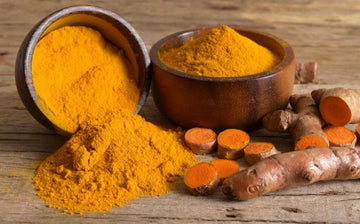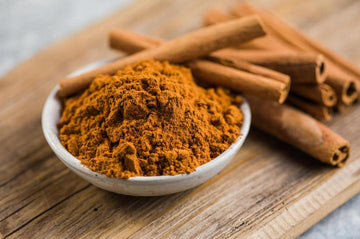Turmeric spice is one of those ingredients you've probably seen but might not fully understand. This bright yellow powder has gained immense popularity in recent years. And there's a good reason why people are adding turmeric spice to everything from smoothies to soups.
But what exactly is turmeric spice? How do you use it in cooking? And why does everyone seem to be talking about it these days? If you've asked yourself these questions, you're in the right place.
This guide will teach you everything about turmeric spice. We'll cover what it is, how it tastes, and the best ways to use it in your kitchen. You'll also learn about turmeric spice alternatives and how this golden powder compares to other common spices. By the end, you'll know exactly how to make the most of turmeric spice in your cooking.
Let's get started with the basics of this amazing ingredient.
What is turmeric spice
Turmeric spice comes from the root of the Curcuma longa plant, which belongs to the ginger family. This tropical plant grows mainly in India and Southeast Asia. The root looks similar to ginger on the outside, but when you cut it open, you'll see that distinctive orange-yellow color.
To make turmeric spice, the roots are boiled, dried, and then ground into a fine powder. This process concentrates the flavor and creates the vibrant golden powder we know today. Fresh turmeric root is also available in many grocery stores, but most people use the dried, powdered form.
Is it actually a spice?
Yes, turmeric is definitely a spice. It comes from a plant root and is used to flavor and color food, which fits the exact definition of a spice. Some people confuse turmeric spice with herbs (which come from leaves), but since it's derived from a root, it's classified as a spice.
How to pronounce turmeric
Here's something interesting: many English speakers pronounce turmeric spice incorrectly. The correct pronunciation is "TER-muh-rik" with three syllables. However, you'll often hear people say "TOO-muh-rik" or even drop the first 'r' sound entirely. Both versions are widely accepted, but "TER-muh-rik" is technically correct.
Origin and history

Turmeric spice has been used for nearly 4,000 years. It originated in India, where it's still a crucial ingredient in curry powders and traditional dishes. Ancient cultures didn't just use turmeric spice for cooking – they also valued it for dyeing fabric and religious ceremonies. Today, India produces about 80% of the world's turmeric supply.
What does turmeric spice taste like?
Turmeric spice has a complex flavor profile that's hard to describe in simple terms. The taste is earthy and slightly bitter, with a mild peppery kick. Some people detect hints of mustard or even a subtle ginger-like warmth. Unlike hot spices, turmeric spice isn't spicy in the traditional sense. Instead, it adds depth and a slight tanginess to dishes.
The aroma of turmeric spice is equally distinctive. It smells earthy and somewhat musky, with notes that remind some people of orange peel. When you cook with turmeric spice, it releases these aromatic compounds, which can fill your kitchen with its unique scent.
Common culinary uses
Turmeric spice is incredibly versatile in the kitchen. In Indian cuisine, it's essential for making curry powder and gives many dishes their characteristic yellow color. You'll find turmeric spice in dal, biryani, and countless vegetable preparations. Middle Eastern cooking also relies heavily on this golden powder for rice dishes and meat marinades.
Beyond traditional uses, turmeric spice has found its way into modern recipes. People add it to smoothies, golden milk lattes, and even baked goods. Roasted vegetables benefit from a sprinkle of turmeric spice, which adds both color and flavor. Many cooks use it to brighten up soups, stews, and grain bowls.
Rice dishes particularly benefit from turmeric spice. Just a teaspoon can transform plain white rice into vibrant yellow rice. This technique is popular in many cuisines, from Spanish paella to Persian tahdig. The spice doesn't overpower other flavors but enhances the overall dish.
Turmeric spice also works well in marinades and spice rubs. Combined with other spices like cumin, coriander, and paprika, it creates flavorful coatings for chicken, fish, or tofu. The powder helps other spices stick to proteins while adding its distinctive taste and color.
Turmeric spice alternatives: What to use if you don't have one and the recipe demands it
Running out of turmeric spice in the middle of cooking can be frustrating. Fortunately, several substitutes can work depending on what your recipe needs. Some alternatives replicate the color, others match the flavor, and a few can do both reasonably well.

Best flavor substitutes
Saffron is the closest match for turmeric spice in terms of providing both color and an earthy flavor. However, saffron is expensive and has a more floral taste. Use just a pinch of saffron threads where you'd normally use a teaspoon of turmeric spice. This works especially well in rice dishes and paellas.
Ginger powder makes sense as a substitute since turmeric and ginger come from the same plant family. While ginger won't give you the yellow color, it provides a similar warmth and slight bite. Use about half the amount of ginger powder as you would turmeric spice, since ginger has a stronger flavor.
Curry powder already contains turmeric spice along with other spices like cumin, coriander, and fenugreek. This makes it a convenient substitute, though it will change your dish's overall flavor profile. Start with half the amount and adjust to taste, as curry powder is more complex than pure turmeric spice.
Color substitutes
Annatto (also called achiote) provides a similar golden-orange color without much flavor impact. This seed-based coloring is common in Latin American cooking. Use annatto powder in equal amounts to turmeric spice when color is your main concern.
Mustard powder offers a yellow tint and adds a mild, slightly tangy flavor. While not identical to turmeric spice, it works in marinades and dressings. Use three-quarters of the amount called for in your recipe, as mustard can be more pungent.
Paprika won't give you the same yellow color, but it adds a warm orange-red hue and mild, sweet flavor. This works particularly well in spice rubs and roasted dishes. Use equal amounts, though smoked paprika will add a different flavor dimension than turmeric spice.
Emergency combinations
Sometimes combining two ingredients works better than using a single substitute. Mix a pinch of saffron with ginger powder for both color and warmth. Or combine paprika with a tiny amount of mustard powder to approximate turmeric spice's visual and flavor impact.
For golden milk or smoothies where turmeric spice is the star, there's really no perfect substitute. In these cases, it's better to wait until you can get actual turmeric spice rather than compromise the recipe's intended benefits and flavor.
Final thoughts
Turmeric spice is more than just a colorful addition to your spice rack. This golden powder brings thousands of years of culinary tradition to your kitchen, offering unique flavor, vibrant color, and remarkable versatility. Whether you're making traditional curry, experimenting with golden milk, or simply brightening up your rice, turmeric spice proves its worth as an essential pantry staple.
Understanding how to use turmeric spice properly – and what to substitute when you run out – helps you cook with confidence. From Indian kitchens to modern cafes, this ancient root continues to find new applications, proving that some ingredients truly are timeless.
FAQs
Why does turmeric spice stain everything yellow, and how can I prevent it?
Turmeric spice contains curcumin, a powerful natural dye that bonds strongly with proteins and porous materials. This is why it stains cutting boards, countertops, and especially plastic containers. To prevent staining, work with turmeric spice on glass or stainless steel surfaces, wear gloves when handling fresh roots, and immediately wipe up any spills with a mixture of baking soda and dish soap. For stubborn stains, sunlight naturally breaks down curcumin – leave stained items in direct sunlight for a few hours.
Does turmeric spice lose potency over time, and how should I store it?
Yes, turmeric spice gradually loses both flavor and color intensity. While it doesn't spoil in a way that makes it unsafe, old turmeric spice becomes bland and less vibrant. Store it in an airtight container away from light, heat, and moisture. Properly stored, ground turmeric spice maintains peak quality for about a year, though it remains usable for 3-4 years. Fresh turmeric root keeps for 2-3 weeks in the refrigerator or can be frozen for up to 6 months.
Why do some recipes call for black pepper with turmeric spice?
Black pepper contains piperine, a compound that increases your body's absorption of curcumin (turmeric's active compound) by up to 2000%. This combination is particularly important in health-focused recipes like golden milk or turmeric supplements. Even a small pinch of black pepper significantly enhances turmeric spice's bioavailability, which is why traditional recipes often pair these two spices together.
Is expensive turmeric spice actually better than cheap versions?
Quality varies significantly in turmeric spice. Higher-grade turmeric typically has deeper color, stronger aroma, and higher curcumin content (3-5% versus 2-3% in lower grades). Look for "Alleppey" turmeric, which has the highest curcumin levels, or "Madras" turmeric for a milder flavor. Organic turmeric spice often tastes fresher because it's processed without irradiation. The difference becomes especially noticeable in simple preparations where turmeric is the star ingredient.




